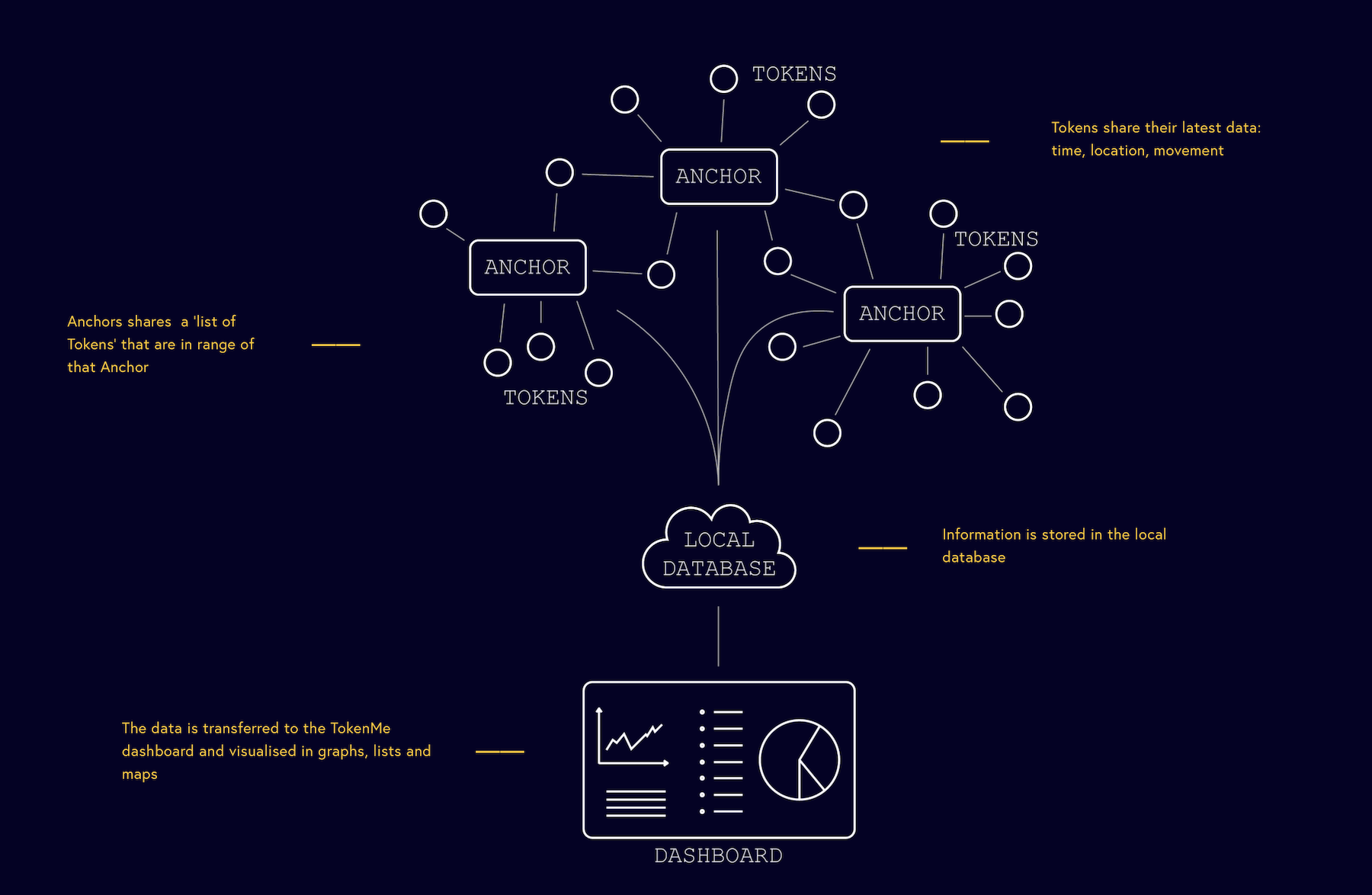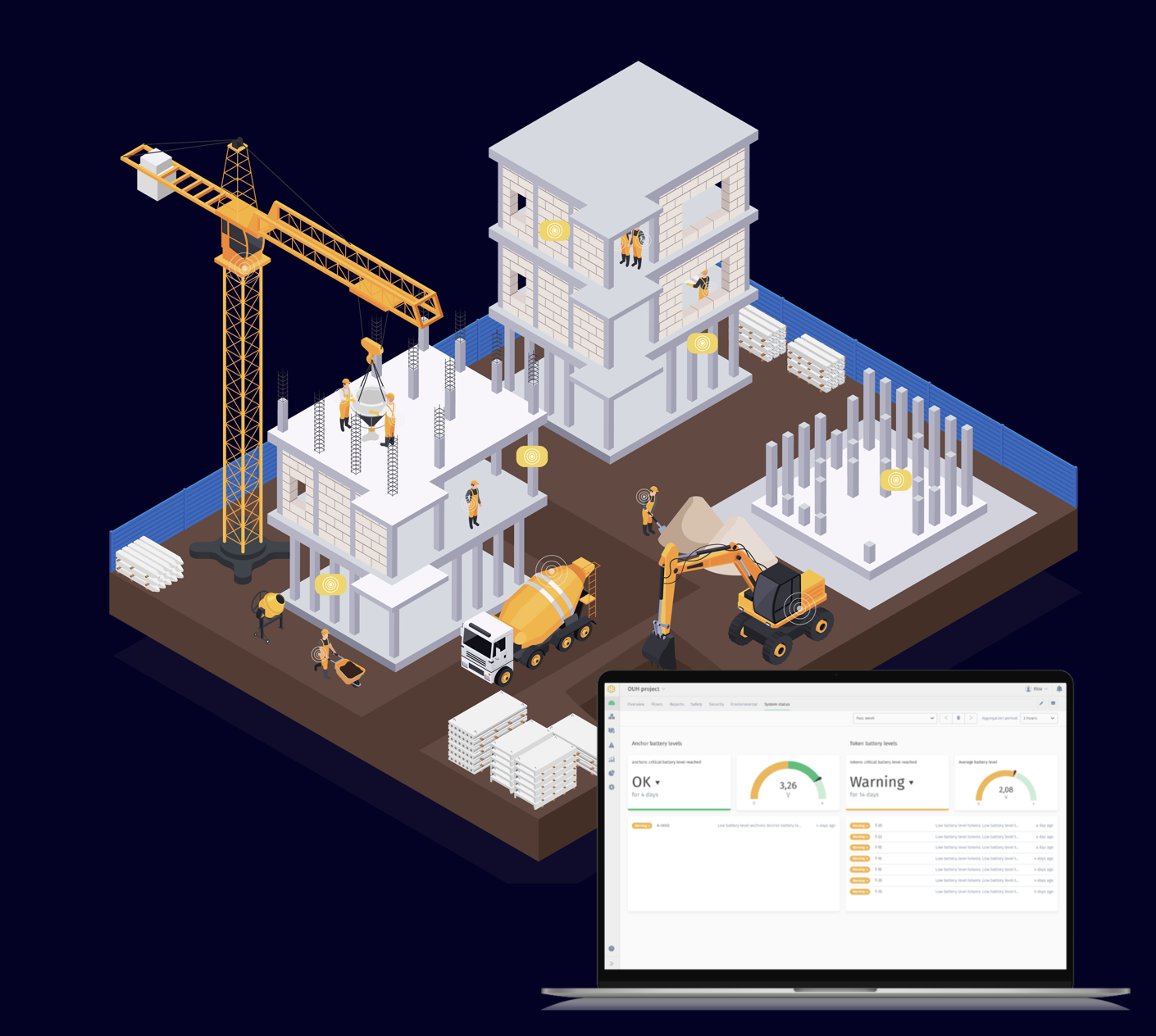Hard hats with tracking sensors. Smart boots and watches. Glasses that open windows to augmented reality. Exoskeletons that relieve user stress. These are among the wearable technologies that have emerged in recent years to make construction sites safer and more efficient for workers and supervisors.
Earlier this month, TokenMe, a Dutch-based firm, received the Innovation Award for wearable technology at the Consumer Electronics Show in Las Vegas. The firm’s product offers construction managers a real-time crowd- and asset-tracking solution via low-power, location-aware radio and RFID (radio-frequency identification) tags and multiple sensors through which data are processed with cloud-based artificial intelligence.
TokenMe’s technology includes ultra-wide band for presence and time-stamp communication, the Low Power Wide Area Networking (LoRaWAN) protocol for easy installation of battery powered receivers, called anchors, WiFi and PoE for installation in existing infrastructures, Near-Field Communication (NFC) protocols for wireless and secure identifications, environmental sensors and RFID ID stickers, and wireless charging using Qi chargers.

Body sensors transmit construction project data
The technology works like this: jobsite workers or visitors wear smart badges or helmet tags called tokens, which send data about the wearers' time, location, and movement to anchors that are mounted strategically around the site.
The 45x45x12-millimeter tags have a range up to 50 meters and an operational battery life of 500 days. They come equipped with Bluetooth and UWB tracking sensors, a 6-axis motion sensor, and a temperature sensor. The 150x66x42-mm anchors each has a coverage range of 500 sm; wireless connectivity with UWB, BLE, WiFi-Mesh, and LoRaWAN; and is equipped with sensors for temperature, humidity, air quality, and motion detection.
The anchors send this jobsite information to a proprietary cloud database that processes the data through an AI engine to provide project managers and other interested parties with a dashboard that shows graphs, visuals, and observations about task completions. Movement and interaction triggers can be preprogrammed as warnings and alarms.
The dashboard information can also help guide supervisors’ and contractors’ future plans.
As a communications tool, TokenMe’s presences and access monitoring data can be integrated into classical systems to deliver flexible application programming interfaces and triggers to generate meaningful and representative data, according to the firm. Its technology has a UWB frequency range of between 3.1 and 10.6 GHz, and a transmission range of between 32.8 and 656.2 ft, depending on the application. Its localized accuracy falls between 0.33 and 1.64 ft, and has low susceptibility to interference.
Related Stories
AEC Tech Innovation | Oct 8, 2024
New ABC technology report examines how AI can enhance efficiency, innovation
The latest annual technology report from Associated Builders and Contractors delves into how artificial intelligence can enhance efficiency and innovation in the construction sector. The report includes a resource guide, a case study, insight papers, and an essay concerning applied uses for AI planning, development, and execution.
AEC Tech | Oct 3, 2024
4 ways AI impacts building design beyond dramatic imagery
Kristen Forward, Design Technology Futures Leader, NBBJ, shows four ways the firm is using AI to generate value for its clients.
3D Printing | Sep 17, 2024
Alquist 3D and Walmart complete one of the nation’s largest free-standing, 3D-printed commercial structures
Walmart has completed one of the largest free-standing, 3D-printed commercial structures in the US. Alquist 3D printed the almost 8,000-sf, 20-foot-high addition to a Walmart store in Athens, Tenn. The expansion, which will be used for online pickup and delivery, is the first time Walmart has applied 3D printing technology at this scale.
Energy Efficiency | Aug 9, 2024
Artificial intelligence could help reduce energy consumption by as much as 40% by 2050
Artificial intelligence could help U.S. buildings to significantly reduce energy consumption and carbon emissions, according to a paper by researchers at the Lawrence Berkeley National Laboratory.
Affordable Housing | Aug 7, 2024
The future of affordable housing may be modular, AI-driven, and made of mushrooms
Demolished in 1989, The Phoenix Ironworks Steel Factory left a five-acre hole in West Oakland, Calif. After sitting vacant for nearly three decades, the site will soon become utilized again in the form of 316 affordable housing units.
Great Solutions | Jul 23, 2024
41 Great Solutions for architects, engineers, and contractors
AI ChatBots, ambient computing, floating MRIs, low-carbon cement, sunshine on demand, next-generation top-down construction. These and 35 other innovations make up our 2024 Great Solutions Report, which highlights fresh ideas and innovations from leading architecture, engineering, and construction firms.
AEC Tech Innovation | Jul 4, 2024
Caution competes with inevitability at conference exploring artificial intelligence for design and construction
Hosted by PSMJ, AEC Innovate in Boston found an AEC industry anxiously at the threshold of change.
AEC Tech | Apr 30, 2024
Lack of organizational readiness is biggest hurdle to artificial intelligence adoption
Managers of companies in the industrial sector, including construction, have bought the hype of artificial intelligence (AI) as a transformative technology, but their organizations are not ready to realize its promise, according to research from IFS, a global cloud enterprise software company. An IFS survey of 1,700 senior decision-makers found that 84% of executives anticipate massive organizational benefits from AI.
AEC Tech | Feb 28, 2024
How to harness LIDAR and BIM technology for precise building data, equipment needs
By following the Scan to Point Cloud + Point Cloud to BIM process, organizations can leverage the power of LIDAR and BIM technology at the same time. This optimizes the documentation of existing building conditions, functions, and equipment needs as a current condition and as a starting point for future physical plant expansion projects.
AEC Innovators | Feb 28, 2024
How Suffolk Construction identifies ConTech and PropTech startups for investment, adoption
Contractor giant Suffolk Construction has invested in 27 ConTech and PropTech companies since 2019 through its Suffolk Technologies venture capital firm. Parker Mundt, Suffolk Technologies’ Vice President–Platforms, recently spoke with Building Design+Construction about his company’s investment strategy.
















